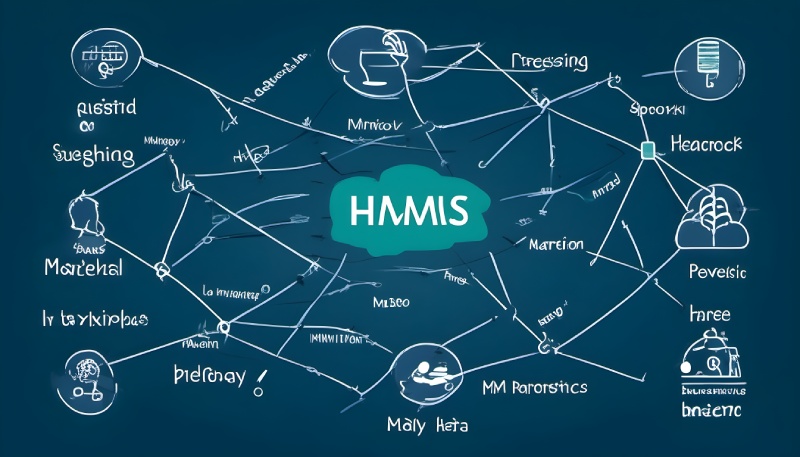Hidden Markov Models (HMMs) have emerged as indispensable tools in the realm of Natural Language Processing (NLP). Their ability to handle sequential data and model complex probabilistic relationships has led to a wide array of applications in the field. In this introduction, we delve into the versatile role that HMMs play in NLP, ranging from part-of-speech tagging and speech recognition to machine translation and sentiment analysis. We explore how these models navigate the intricacies of language to extract meaning, make predictions, and uncover hidden structures within textual data. By the end of this discussion, you’ll gain a deeper understanding of why HMMs are a cornerstone in NLP, enabling machines to comprehend and process human language more effectively.
Get Contextual Embeddings from BERT
Speech Emotion Recognition Example with Code & Database
Bag of Words vs. CBOW vs. TF-IDF + Python Example
you may be interested in the above articles in irabrod.
Hidden Markov Model Explained
Hidden Markov Models (HMMs) are statistical models used in various fields, including natural language processing (NLP) and speech recognition. They are named “hidden” because they deal with unobservable (hidden) states that are inferred from observable data.
In NLP, HMMs are commonly used for tasks involving sequential data, like text or speech. They consist of two main components:
1. Hidden States: These are the underlying, unobservable states of a system. In NLP, these states can represent various linguistic or syntactic elements, like part-of-speech tags in a sentence.
2. Observations: These are the data we can observe or measure, such as words in a text. Each hidden state emits these observations with certain probabilities.
The core idea is that you have a sequence of observations (e.g., a sentence) and you want to find the most likely sequence of hidden states that generated these observations. This is done using the probabilities of transitioning from one hidden state to another and the probabilities of emitting observations from each hidden state.
HMMs are versatile and can be used for tasks like part-of-speech tagging, speech recognition, named entity recognition, and more. They work well for problems where the current state depends only on the previous state, making them suitable for modeling sequences. However, they have limitations, such as the simplifying assumption of state independence, which may not hold in some real-world scenarios. Still, HMMs have laid the foundation for more advanced models in NLP and remain a valuable tool in the field.
Where Does the Hidden Markov Model is Used
Hidden Markov Models (HMMs) are versatile and find applications in various fields due to their ability to model sequential data with hidden states. Here are some common areas where HMMs are used:
1. Speech Recognition: HMMs have been extensively used in automatic speech recognition systems. They can model the relationships between phonemes and words, making them crucial for converting spoken language into text.
2. Natural Language Processing (NLP):
– Part-of-Speech Tagging: HMMs are employed to assign part-of-speech tags to words in a sentence, aiding in tasks like information retrieval and machine translation.
– Named Entity Recognition: HMMs are used to identify named entities (e.g., names of persons, organizations, locations) in text.
3. Bioinformatics:
– Genome Sequence Analysis: HMMs are used to identify genes and regulatory elements within DNA sequences.
– Protein Structure Prediction: They help predict the secondary structure of proteins.
4. Economics and Finance:
– Stock Price Modeling: HMMs can model the hidden states affecting stock price movements, aiding in financial analysis and prediction.
– Economic Forecasting: HMMs are used to analyze economic data and predict trends.
5. Computer Vision:
– Gesture Recognition: HMMs are applied to recognize gestures in computer vision systems.
– Object Tracking: They are used to track the movement of objects in video sequences.
6. Natural Resource Management:
– Environmental Modeling: HMMs help model and predict environmental changes based on observed data.
7. Telecommunications:
– Signal Processing: HMMs are used for tasks like noise reduction and signal detection in telecommunications.
8. Healthcare:
– Disease Modeling: HMMs help model the progression of diseases and predict patient outcomes.
9. Robotics:
– Robot Navigation: HMMs are used for robot navigation and path planning.
10. Quality Control: HMMs help monitor and control manufacturing processes to ensure product quality.
These are just a few examples of the diverse applications of Hidden Markov Models. They are particularly valuable for tasks involving sequential data, where understanding the underlying hidden structure is essential for making predictions or decisions.
Use of Hidden Markov Model in NLP
Hidden Markov Models (HMMs) find several important applications in Natural Language Processing (NLP). Here are some key uses of HMMs in NLP:
- Part-of-Speech Tagging (POS): HMMs are widely used for part-of-speech tagging. In this context, the states represent parts of speech (e.g., noun, verb, adjective), and the observations are words. By learning the transition probabilities between different parts of speech and the emission probabilities of words for each part of speech, HMMs can determine the most likely part of speech for each word in a sentence.
- Named Entity Recognition (NER): HMMs are applied to identify and classify named entities (such as names of persons, organizations, locations, dates, and more) within a text. This is valuable for information retrieval and structuring unstructured text data.
- Speech Recognition: While often associated with speech processing, HMMs are used for converting spoken language into text. They help in modeling phonemes, words, and even entire sentences.
- Machine Translation: In the context of machine translation, HMMs can be used to align words or phrases in a source language with their corresponding translations in a target language. This alignment is crucial in statistical machine translation models.
- Text-to-Speech Synthesis (TTS): In TTS systems, HMMs are used to model the prosody (intonation, rhythm, and tempo) of speech to make synthesized speech sound more natural.
- Syntactic and Semantic Parsing: HMMs can assist in syntactic parsing tasks to identify sentence structure and relationships between words. They can also be used for semantic role labeling, determining the roles of words in relation to predicates.
- Spelling and Grammar Correction: HMMs can be applied to identify and correct spelling and grammar errors in text, providing suggestions for corrections.
- Sentiment Analysis: In sentiment analysis, HMMs can be used to model sentiment transitions within a text, helping to determine the sentiment of a document or sentence.
- Text Segmentation: HMMs can segment continuous text into meaningful units, such as sentences or paragraphs, by detecting transitions in text structure.
- Language Generation: HMMs have been used in language generation tasks, such as text generation or text summarization. They help in generating coherent and contextually relevant text.
- Dialogue Systems: HMMs can be employed in dialogue systems to model user intentions, system responses, and dialogue states.
HMMs provide a probabilistic framework for modeling the structure and patterns in natural language. They are valuable for various tasks in NLP where understanding sequential dependencies and hidden states is essential for accurate analysis and prediction.
Hierarchical Hidden Markov Model
A Hierarchical Hidden Markov Model (HHMM) is an extension of the traditional Hidden Markov Model (HMM) that allows for modeling complex sequential data with multiple levels of abstraction. HHMMs are particularly useful when dealing with data that exhibit hierarchical or nested structures. Here are the key concepts and characteristics of HHMMs:
- Hierarchy: In an HHMM, the model is organized hierarchically, consisting of multiple levels. Each level represents a different level of abstraction in the data. For example, in speech recognition, the levels could represent phonemes at a lower level, words at a higher level, and sentences at an even higher level.
- States: Similar to a traditional HMM, each level of an HHMM has a set of hidden states. These states represent the underlying structure of the data at that level.
- Transitions: Transitions between states occur at each level, representing the temporal dependencies in the data. Transitions can be directed both within a level and between levels.
- Emissions: At each level, observations or emissions are associated with the states. Emissions can be discrete or continuous variables. In the context of speech recognition, these could be acoustic features at the phoneme level, words at the word level, and complete sentences at the sentence level.
- Inference: Inference in an HHMM involves estimating the most likely sequence of states and emissions given the observed data. This inference process typically occurs recursively from the lowest level to the highest level, capturing the hierarchical structure.
- Applications: HHMMs find applications in various fields, including speech recognition, natural language processing, bioinformatics, and robotics. They are especially useful when dealing with data that can be naturally decomposed into hierarchies.
- Complex Modeling: HHMMs provide a framework for modeling complex data where patterns and structures exist at multiple scales. This is particularly valuable in situations where information at different levels of abstraction is needed for accurate analysis.
- Learning: Learning the parameters of an HHMM, including state transition probabilities and emission probabilities, can be more challenging than in a traditional HMM due to the added complexity of the hierarchical structure.
- Scalability: HHMMs can become computationally intensive, especially as the number of levels and states increases. Efficient algorithms and approximations are often used to make these models computationally tractable.
- Flexibility: HHMMs offer flexibility in capturing complex dependencies in sequential data, making them a valuable tool in machine learning and pattern recognition.
In summary, a Hierarchical Hidden Markov Model is a powerful extension of the traditional HMM, capable of modeling complex hierarchical structures in sequential data. It is used in various fields to capture dependencies and patterns at multiple levels of abstraction, making it a versatile tool for data analysis and prediction.
Hidden Markov Model Sentiment Analysis Python
Hidden Markov Models (HMMs) are typically used for sequence labeling tasks, and while they can be used in sentiment analysis, they are not the most common choice for this particular task. Nevertheless, I can provide you with a simplified example of how you might use an HMM for sentiment analysis on the IMDB movie reviews dataset. Keep in mind that more modern techniques, such as recurrent neural networks (RNNs) and transformers, have largely replaced HMMs for sentiment analysis due to their superior performance.
In this example, I’ll use a basic HMM library in Python called `hmmlearn`. You may need to install it using pip:
pip install hmmlearn
Here’s an example of using an HMM for sentiment analysis on IMDB movie reviews:
import numpy as np
from hmmlearn import hmm
from sklearn.feature_extraction.text import CountVectorizer
from sklearn.model_selection import train_test_split
from sklearn.metrics import accuracy_score
# Sample data (IMDB movie reviews)
reviews = [
"This movie was great and I loved it!",
"Terrible movie, I hated it.",
"I found this film very entertaining.",
"The worst movie I've ever seen.",
# Add more positive and negative reviews
]
labels = [1, 0, 1, 0] # 1 for positive, 0 for negative
# Feature extraction
vectorizer = CountVectorizer(binary=True)
X = vectorizer.fit_transform(reviews).toarray()
# Split the data into training and testing sets
X_train, X_test, y_train, y_test = train_test_split(X, labels, test_size=0.2, random_state=42)
# Define the Hidden Markov Model
model = hmm.MultinomialHMM(n_components=2, n_iter=100)
model.fit([X_train])
# Predict the sentiment labels
y_pred = model.predict(X_test)
# Evaluate the model
accuracy = accuracy_score(y_test, y_pred)
print(f"Accuracy: {accuracy * 100:.2f}%")
Explanation:
- We start by importing the necessary libraries, including `hmmlearn` for the HMM implementation.
- We define some sample movie reviews and their corresponding sentiment labels (1 for positive, 0 for negative).
- We use `CountVectorizer` from scikit-learn to convert the text data into binary feature vectors. This step is necessary as HMMs work with numerical data.
- The data is split into training and testing sets.
- We create an HMM model using `hmmlearn`. In this example, we assume that there are 2 hidden states (one for positive sentiment and one for negative sentiment) and train it on the training data.
- We predict sentiment labels for the test data using the trained HMM.
- Finally, we calculate the accuracy of the model by comparing the predicted labels with the true labels.
Please note that this is a simplified example. In practice, for sentiment analysis, more sophisticated models like RNNs and transformers are preferred due to their ability to capture long-range dependencies in text data. HMMs are generally used in tasks where the sequence modeling aspect is more crucial, such as speech recognition and part-of-speech tagging.
Conclusion
In the realm of Natural Language Processing, Hidden Markov Models (HMMs) stand as pillars of versatility and effectiveness. These models have proven their worth across a spectrum of applications, from part-of-speech tagging to sentiment analysis and beyond. By navigating the sequential and probabilistic nature of language, HMMs uncover invaluable insights and patterns within textual data. Their remarkable ability to capture the hidden structures of language empowers machines to understand and interact with human communication. As NLP continues to advance, HMMs remain indispensable tools, continually evolving to enhance the depth and breadth of language understanding. Thus, their role in shaping the future of NLP remains secure, promising innovative solutions to complex linguistic challenges.








